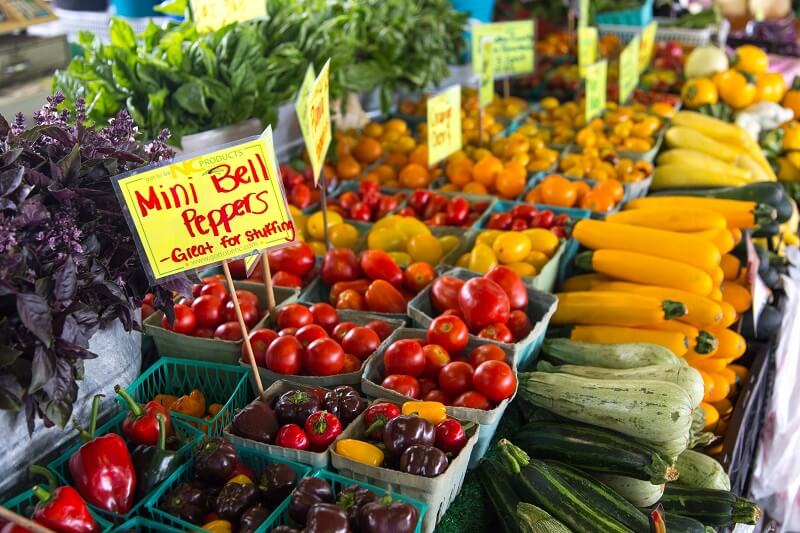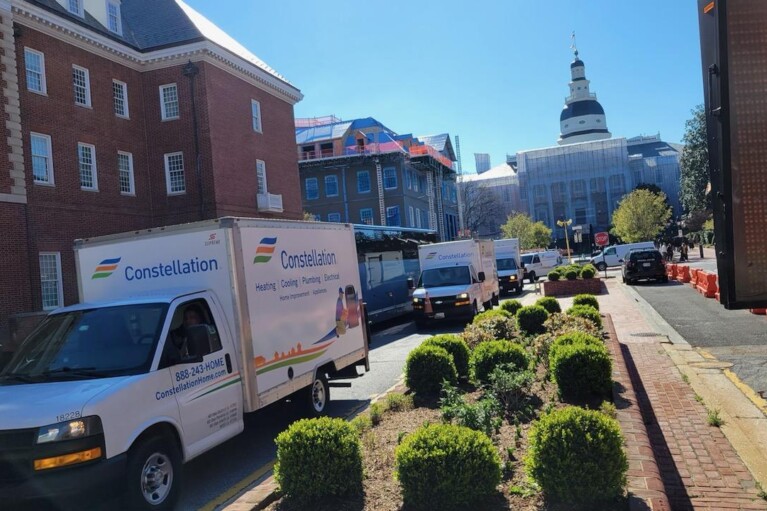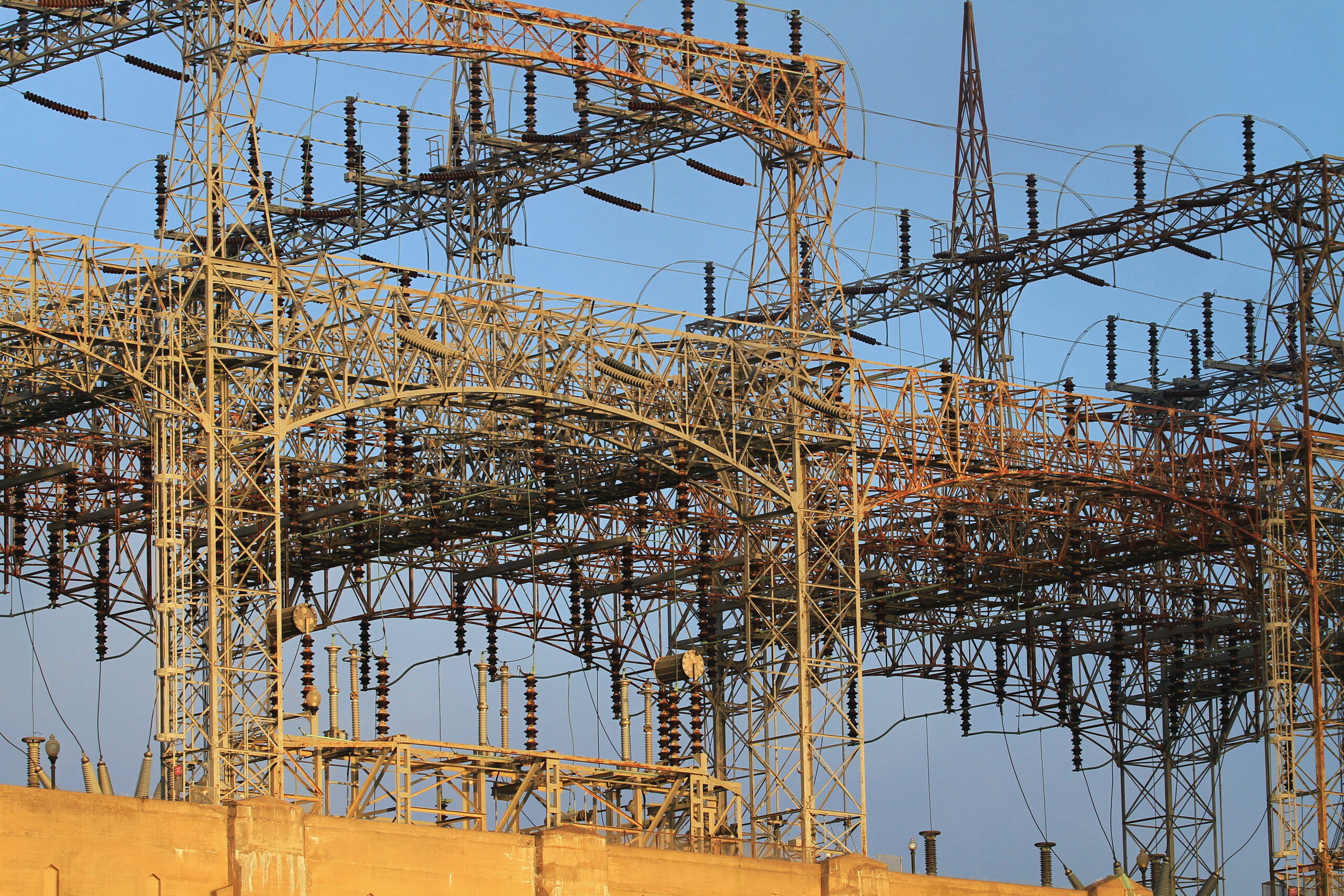Food Insecurity in Md. Declined with Added Government Benefits, But Improvement Short-Lived

As jobs disappeared and large chunks of the economy shut down during the coronavirus pandemic, long lines formed outside food banks and experts warned of spikes in hunger.
After the expansion of government aid that followed, fewer Marylanders relied on food pantries and assistance programs for meals — but only temporarily, a recent report found.
By comparing data from March 2020 through July 2021, the Maryland Food Bank found that fewer people visited their food pantries after additional pandemic relief measures were announced and after safety net programs like the federal Supplemental Nutrition Assistance Program (SNAP), which gives benefits to low-income families to purchase food, were expanded.
The Maryland Food Bank — which distributes food to more than 1,450 food pantries, schools, faith-based organizations and nonprofits across the state — also found that the reverse is true. When pandemic relief programs ended, more Marylanders sought help from food pantries and the rate of demand — measured in pounds of food distributed — returned to previous levels.
For instance, soon after Maryland distributed funds from an emergency federal nutrition program to eligible school children in the summer of 2020, the Maryland Food Bank distributed fewer pounds of food. And after the American Rescue Plan passed last spring, there was a similar drop in need from their food pantries.
And when unemployment benefits ended last summer, the Maryland Food Bank saw a steady increase in demand.
When the second round of stimulus checks was announced last winter, the Maryland Food Bank recorded around 180 new Marylanders at food pantries. But several weeks after the checks were sent and spent, there were around 500 new Marylanders visiting food pantries. These numbers are based off 10% of Maryland Food Bank’s network partners.
Although the findings were not unexpected, it is important to understand the collective impact of public benefit programs and food charities like Maryland Food Bank throughout the state, said Meg Kimmel, executive vice president and chief strategy officer for the Maryland Food Bank.
The findings underscore the volatility in the daily lives of Marylanders, who are facing a medley of instabilities beyond food insecurity, Kimmel said.
“People are moving in and out of food insecurity. Oftentimes, it’s a temporary situation, but more often than not, it’s cyclical,” she said. The research also highlights that people with stretched finances are making tough choices around food and other areas of life such as transportation, housing and childcare, Kimmel said.
“Pandemic safety net investments, particularly when recognized as unique and short-lived emergency relief, cannot be expected to achieve lasting, systematic change, let alone eradicate the root causes of financial hardship and food insecurity,” the report states.
Over the last year, up to two million Marylanders faced food insecurity and the Maryland Food Bank anticipates an increase in need this year with the expiration of pandemic relief benefits, such as the expanded child tax credit that ended last month after Congress failed to extend it.
The Maryland Food Bank spent $28 million to purchase food in the past year, a 405% increase from what they were spending before the pandemic, Kimmel said.
Since the start of the pandemic, the Maryland Food Bank distributed nearly 84 million meals, which is a 70% increase over the same time period before the pandemic.
Food banks and charity programs are critical to breaking barriers to food access, Kimmel said. But she also cautioned that Maryland cannot fully remedy food insecurity unless there are structural changes to systems that create food insecurity in the first place — such as under-resourced public schools and lack of affordable housing.
Kimmel said SNAP is a vital tool in lowering food insecurity as living costs go up, but expects that expanded SNAP benefits will end soon. Nationwide, the SNAP program provides nine times as much direct benefit for food assistance than Feeding America — a network of 200 food banks across the country including Maryland Food Bank — does, according to Feeding America.
Expanding free and healthy school meals is also critical because that is usually when needy children get their healthy meals of the day, Kimmel said. Also, more funding is needed to make fresh produce available to food insecure Marylanders and to help enable food banks to clean, process and package fresh produce, Kimmel said.
Fresh produce is important to a healthy diet, but in some communities, there is no grocery store nearby that sells it. And even when there is one, it is usually expensive and families opt for a lower nutritional option if it is cheaper, Kimmel said.
Del. Lorig Charkoudian (D-Montgomery), who sits on the Maryland food system resiliency council, said the state needs to build a just economic system with family sustaining wages and adequate health care coverage to really tackle food insecurity. But since such policy changes take time, she said food assistance programs and food banks will continue to be pillars in reducing food insecurity.
Charkoudian is sponsoring a bill this year that encourages a shift to a localized food system for food insecure Marylanders. This includes a “Farm to School” program that encourages schools to collaborate with local farmers to get more local fresh produce into their meals.
“Not only are we making sure that people who are food insecure have access to food, but that the food they have access to is high quality, local, fresh, nutrient-dense food,” Charkoudian said. Investing in a local food system is also better for the environment and critical in the event of supply chain disruptions, which occurred during the pandemic, Charkoudian said.




 Creative Commons Attribution
Creative Commons Attribution